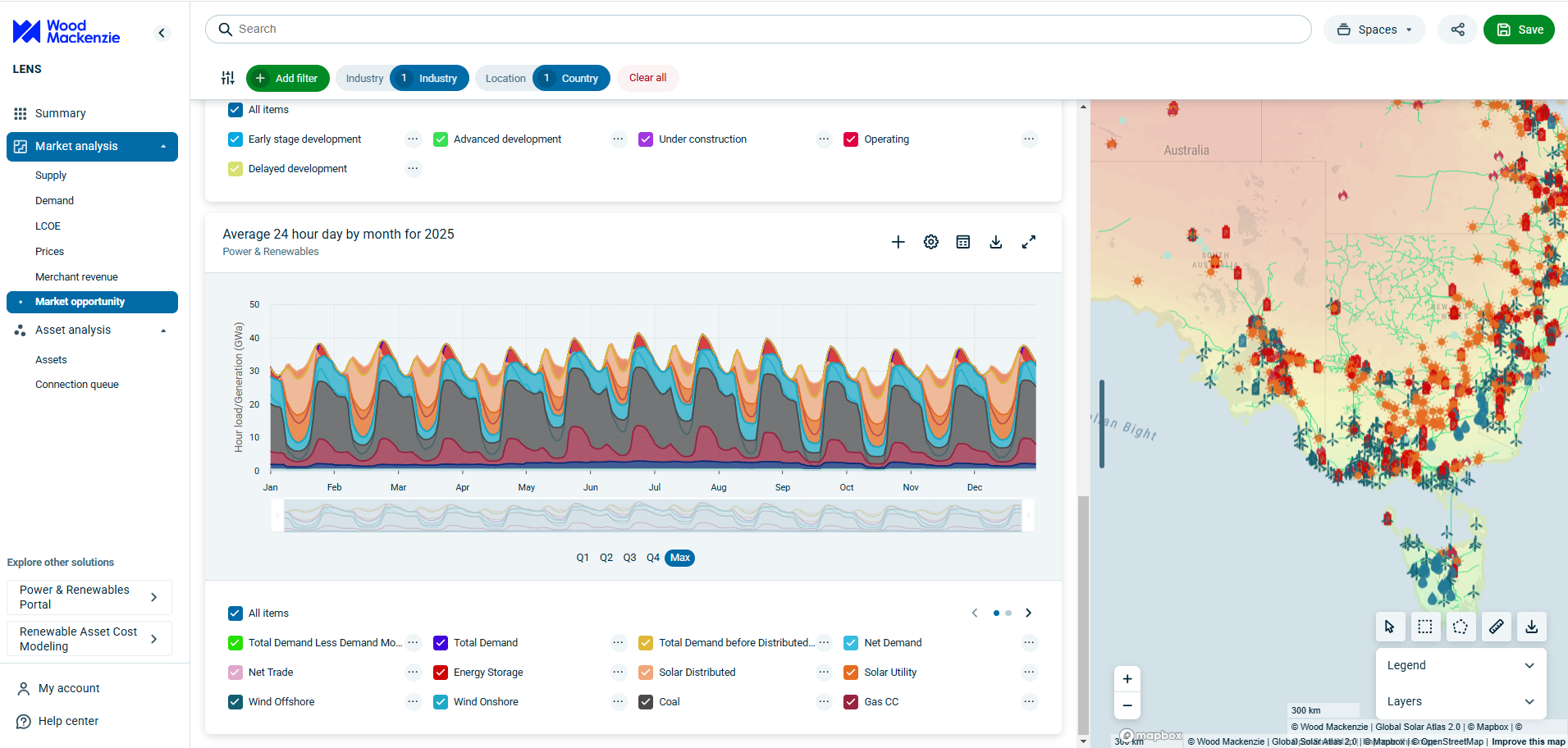Get Ed Crooks' Energy Pulse in your inbox every week
US tariffs push Canada to consider alternative export routes
The cost of the threatened 10% tariff on oil and gas would fall mainly on Canadian producers, because they are tied to the US market
9 minute read
Ed Crooks
Vice Chair Americas and host of Energy Gang podcast

Ed Crooks
Vice Chair Americas and host of Energy Gang podcast
Ed examines the forces shaping the energy industry globally.
Latest articles by Ed
-
Opinion
Keeping cleantech investment alive
-
Opinion
Can energy close US trade gaps?
-
Opinion
Tariff shockwaves shake the energy industry
-
Opinion
How can the power industry meet the challenge of rising demand?
-
Opinion
Is the US being left behind in the race to develop new clean energy technologies?
-
Opinion
US E&Ps look for international growth
A video made by the actor and presenter Jeff Douglas has gone viral recently with a declaration of Canadian national pride. “We are not the 51st anything,” Douglas proclaims. “We are Canadian!”
The video, which echoes a Molson beer commercial from 2000, is funny but reflects a serious issue. Rising tensions with the US, prompted by President Donald Trump’s new tariffs and repeated suggestions that Canada should become the 51st state, have prompted Canadians to reassess their place in the world.
In energy, that has meant taking a fresh look at Canada’s reliance on the US as an export market. About 80% of Canada’s crude production and 40% of its natural gas production are currently sold in the US. As barriers to trade with the US go up, there is growing pressure to find alternative export routes for Canadian resources.
On Sunday Mark Carney, Canada’s prime minister, called a general election for 28 April. The outcome of that election seems finely balanced, polls suggest. But whether Carney’s Liberals or Pierre Poilievre’s Conservatives get to form the next government, it is clear that either of them would be more supportive of fossil fuel infrastructure than the previous prime minister, Justin Trudeau.
Carney has a record as a champion of action to tackle climate change. He launched the Glasgow Financial Alliance on Net Zero when he was UN Special Envoy on Climate Action and Finance in 2021. But in the run-up to the election he has spoken out in support of investment in new pipelines.
"It's about getting things done,” he said in Edmonton, Alberta, last week. “It's about getting… pipelines built, across this country, so we that can displace imports of foreign oil… We need to do things that had not been imagined or had not been thought possible, at a speed we haven't seen before.”
Poilievre, meanwhile, has supported new pipeline construction for many years. “We're going to clear the way for pipelines,” he said back in 2022. “I am going to support pipelines south, north, east, west.”
Last week he unveiled his plan for “shovel ready zones”, which would expedite the development of infrastructure projects including pipelines, LNG plants and mines. “I will strengthen our country, so that we can be capable of standing [on] our own two feet, and standing up to the Americans, where and when necessary,” he said over the weekend.
Canada’s provinces have powers they can use to obstruct infrastructure projects even if they are supported by the federal government. But here too there are signs that the mood has shifted. British Columbia has pledged to accelerate approvals and permits for gas and oil projects including the Ksi Lisims LNG plant and the NEBC Connector, a natural gas liquids pipeline system.
François Legault, premier of Quebec, has opposed oil and gas infrastructure development in the province. He said in 2018 there was “no social acceptability” for the proposed Energy East oil pipeline to pass through Quebec.
Last week, he said the province as “open to these kind of projects.” He added that as a result of pressure from the US, “the opinion is changing right now.”
The Trump administration’s rapid action to pursue its policy agenda in its first nine weeks in office has already prompted a range of responses from other countries around the world. A fundamental shift in Canada’s attitude to investment in energy may be one of them.
Wood Mackenzie view
Modeling of North American oil and gas markets highlights the argument for Canada diversifying its energy export routes. President Trump has threatened to impose a 10% tariff on US imports of Canadian energy from 2 April. If that tariff goes ahead, the burden will fall more on Canadian producers than on US consumers, Wood Mackenzie analysts say.
There will be variations in that according to the specific time and exact location. But on average, we would expect Canadian oil and gas prices to be depressed more than US prices are increased. In general, US customers have more options than Canadian producers do. And the Canadian producers are likely to face a cost for that lack of optionality.
In oil, we would expect the 10% tariff to increase the spread between prices for West Texas Intermediate (WTI) and Western Canada Select (WCS), putting downward pressure on crude in Canada by about US$3-US$5 a barrel.
Sellers of Canadian oil who want to avoid the tariff will have two main options in the short-term: increasing the use of the Trans Mountain Expansion (TMX) pipeline from Alberta to the west coast, and sending more oil for export from the Gulf of America coast.
Both options have limitations. We estimate that there is only about 150,000 barrels per day of unused capacity on TMX. That is not much when total Canadian crude production is on course to be about 4.8 million b/d next year. And increasing exports via the US Gulf coast would incur additional costs that could easily outweigh the benefit from avoiding the tariff. Canada is likely to have to remain reliant on the US for the great majority of its oil export sales.
The position in gas markets is similar. The US is currently the only export market for Canadian gas, and will remain so until the start of commercial operations at LNG Canada, which has its first shipment scheduled for mid-2025.
As a result, we expect that the impact of a 10% US tariff would be felt initially entirely in downward pressure on Canadian gas prices, including the Alberta Energy Company (AECO) benchmark. Even once commercial shipments from LNG Canada are under way, we would still expect most of the cost of the tariff to be borne in Canada.
One consequence of this position is that the impact of the oil and gas tariffs in terms of higher prices for US consumers will be relatively minor, reducing the potential political damage done by those tariffs to the Trump administration.
In the longer term, there are solutions for Canada that could have a greater impact. New pipelines and LNG plants would create greater optionality for Canadian oil and gas exports, making it possible to shift more of the burden of tariffs on to US consumers.
For oil, projects such as the Northern Gateway, from Alberta to the west coast, and Energy East, heading in the other direction to New Brunswick, which were pursued unsuccessfully in the 2010s, could be revived.
For gas, there are several LNG projects that have been making progress, including Ksi Lisims LNG and LNG Canada Phase 2. If all the possible projects get built, that could add up to about 6 billion cubic feet per day (bcf/d) of LNG export capacity. That would represent a genuine alternative to the US, capable of taking most of the 8 bcf/d that Canada currently sends south across the border.
The greatest challenge for all of these export routes, for both oil and gas, will be establishing commercial viability. Companies that suffered year after year of cost and frustration trying to build new pipelines in Canada, ultimately unsuccessfully, are not going to come back for another attempt without a compelling commercial case.
Dylan White, Wood Mackenzie’s principal analyst for North American crude markets, warns that all of the oil pipeline proposals face some tough challenges. Northern Gateway faces the same technical difficulties and legal issues crossing the Canadian Rockies as TMX, which was completed well behind schedule and over budget. Energy East is a route three-quarters of the way across Canada that goes through six provinces.
Dulles Wang, a Wood Mackenzie director for Americas gas and LNG research, says Canada’s LNG projects have some significant advantages over their competitors around the world. Upstream production costs and life-cycle greenhouse gas emissions are low, and the travel time from the coast of British Columbia to key Asian markets is relatively short. But those projects also face challenges, including high construction costs.
Building out Canada’s new energy export infrastructure will take more than warm words from politicians. And even if it begins the day after the election, it is unlikely to show any results until well after President Trump has left office.
But if the present administration’s policies signal a long-term shift in the economic relationship between the US and Canada, then Canadian oil and gas producers could be very glad of the additional options when a future crisis hits.
In brief
The Trump administration has tightened sanctions on Iran, as part of its “maximum pressure” strategy aimed at preventing the country acquiring nuclear weapons. It has designated a crude oil and petroleum products storage terminal in Huizhou, China, as having knowingly received and stored Iranian crude. The designation means that any of the company’s assets in the US are blocked, and Americans are not allowed to do any business with it, unless they have a licenced exemption.
Mike Waltz, the National Security Adviser, said over the weekend that the issue of Iran’s nuclear programme was “coming to a head”. He added: “All options are on the table… they will not, and cannot, be allowed to have a nuclear weapons programme… Give it up, or there will be consequences.”
Heathrow airport was closed for almost 24 hours after losing power following a fire at a local electricity substation. National Grid, the electricity networks operator, said adequate electricity supply had been available when the airport was shut down. John Pettigrew, National Grid’s CEO, told the FT: “There was no lack of capacity from the substations…Each substation individually can provide enough power to Heathrow.”
Other views
Opening Nord Stream 2 would be a catastrophic mistake – Constanze Stelzenmüller
China is no climate saviour – Seaver Wang and Vijaya Ramachandran
Quote of the week
“I think the future of nuclear energy is bright. But a strangling giant regulatory state has just really crushed nuclear for decades now. The number of people that have died from nuclear energy in the United States is zero, in its entire history. We don’t even have any serious illnesses from it. So it’s a great power production technology that big government and overweening regulatory state has just crushed. And President Trump’s agenda is to help unleash nuclear energy.”
Chris Wright, the US energy secretary, outlined the Trump administration’s ambitions for nuclear power. He described nuclear as “a tremendous reliable, affordable source, that gives you electricity whether the wind is blowing or the sun is shining, subsidies are flowing or subsidies aren’t flowing.”
Chart of the week
This shows Wood Mackenzie’s view on what has been one of the more contentious issues in energy analysis over the past decade or so: a comparison of the life-cycle greenhouse gas emissions from US LNG compared to coal as a fuel for power generation in Europe and China.
Wood Mackenzie’s analysis shows that the life cycle emissions of US LNG are typically around 48% of the coal equivalent. This difference comes from the higher emissions of coal compared to gas in combustion, and also from the extremely high methane losses associated with underground mining in Appalachia, which is a key source for imported thermal coals in Europe.
Get The Inside Track
Ed Crooks’ Energy Pulse is featured in our weekly newsletter, alongside more news and views from our global energy and natural resources experts. Sign up today via the form at the top of the page to ensure you don’t miss a thing.







